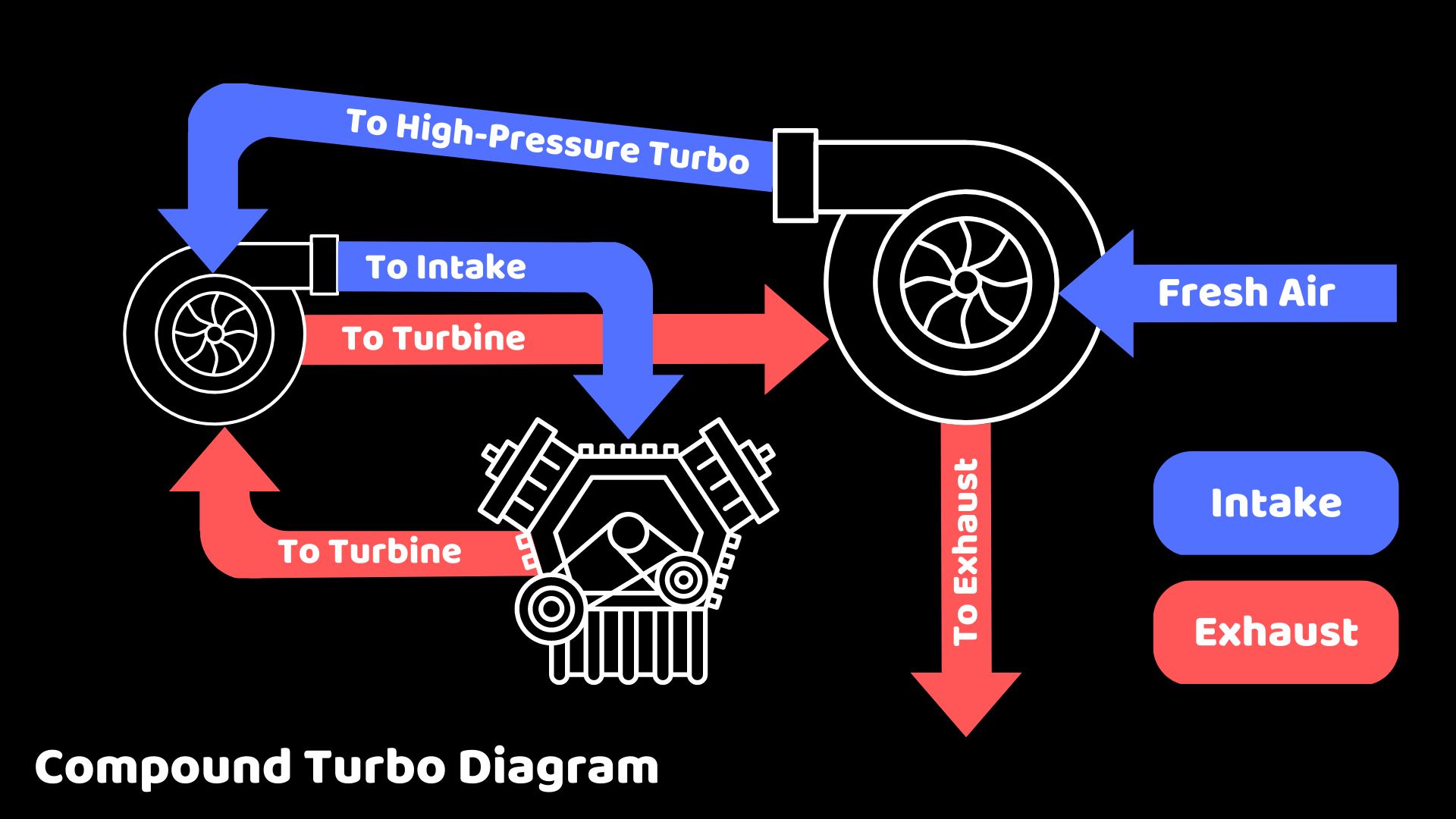Turbocharger Swaps; Bigger Turbo, Twin-Turbos, or Compound Turbos?
Jan 1st 2023
Choosing the Turbocharger Setup for Your Car
Maximizing horsepower is a common goal when building your dream vehicle, and pushing more boost is often one of the most effective means to do so. Whether you’re starting with a naturally aspirated vehicle or you're already rocking forced induction, installing a new turbocharger is often a great option for reaching your power goals. However, simply adding on a turbo or replacing your existing one with some shiny new parts isn’t the only thing to consider; there are three main turbocharger setups to choose from, each with their benefits and complications. So, let’s begin exploring your options.

Why Go With a Large Single-Turbo Setup?
Any turbocharger’s job is to compress air molecules so more air and fuel can be supplied to the engine, yielding more power per combustion cycle. However, especially in the case of OEM turbochargers, you may find they’re limited in terms of their maximum air-volume output. That effectively limits the amount of boost that can be made sustainably throughout the RPM range, lacking particularly in the high RPMs where a higher mass of air is demanded to maintain boost pressure. OEM turbochargers are usually optimized for the average driver on the street, and those drivers aren’t typically spending too much time above 4k RPMs. But, if you’re actively racing your car, you’ll certainly be stretching into the RPM limit of your engine.
Opting for a larger single turbo is often the most simple method for increasing your boost ceiling with one particular caveat: spool time. Those OEM turbochargers are optimized to spool up quickly to make their power in the lower RPMs for standard street driving. But, if you’re spending more time in the higher RPMs, a larger turbo makes sense and can immensely improve your power output. Determining the exact size of turbo that would work best for your application can be a complex equation, so give Boostin Performance a call to help find the best turbo for your car.

Why Go With a Twin-Turbo Setup?
As you might have guessed by the namesake, twin turbos add another turbocharger to the equation. Each turbocharger is typically smaller and is powered by half the amount of cylinders (rather than all cylinders in a single turbocharger). This reduces the lag from the boost giving your vehicle a faster boost build and spool. Despite often being smaller, twin turbos may produce similar power numbers to a large single turbo.
You can think of twin-turbo setups as the happy medium between a huge turbocharger and a stock turbocharger; they offer good spool characteristics and can put out great power numbers. That makes them great for both the street and the track, but it’s also worth mentioning that they’re twice as complex as a single turbo system. Additionally, these systems are also typically best reserved for 6-cylinder and above engines. Learn more about if a twin-turbo setup is right for you by giving Boostin Performance a call today. From installation to tuning, Boostin Performance is your local high-performance automotive shop.

Why Go With a Compound Turbo Setup?
A compound turbo setup consists of a low-pressure turbo that feeds boosted air into the inlet of a high-pressure turbo, thus compounding the output. The compounded air from the high-pressure turbo is then fed through an intercooler, with some of the more complex systems even feeding the low-pressure turbo’s output through an intercooler as well. While typically found in OEM diesel applications, these setups can also be great for high-performance vehicles.
The core benefit of a compound turbo setup is that it can keep both turbochargers within their high-efficiency ranges. In cases where the maximum boost is kept fairly consistent with the original setup, a compound turbo kit can reduce spool time for quicker boost onset and a more predictable power curve. A compound turbo setup can also produce pretty extreme boost numbers without an extreme excess of added heat. These systems are quite complex and make boost control quite difficult, but if you’re pushing the limits of a single turbo above 60PSIg, compound turbos are the next step to more boost. We at Boostin Performance are all about more boost.
Which Turbo Do I Choose?
This answer relies solely on the performance you want to see from your vehicle, budget, and available space under the hood. Other factors that come into play are the engine internals, engine displacement, intercooler sizing, the atmospheric pressure of where you’ll typically be racing, the racing class you’d like to be a part of, the fuel you’d like to run, and plenty of other things. Don’t worry, Boostin Performance makes it easy. Tell us the power figure you’re looking to hit, and we’ll let you know how best to make it happen. Let Boostin Performance help build your dream with our installation services, tuning services, and high-performance automotive parts; start with a call today.
